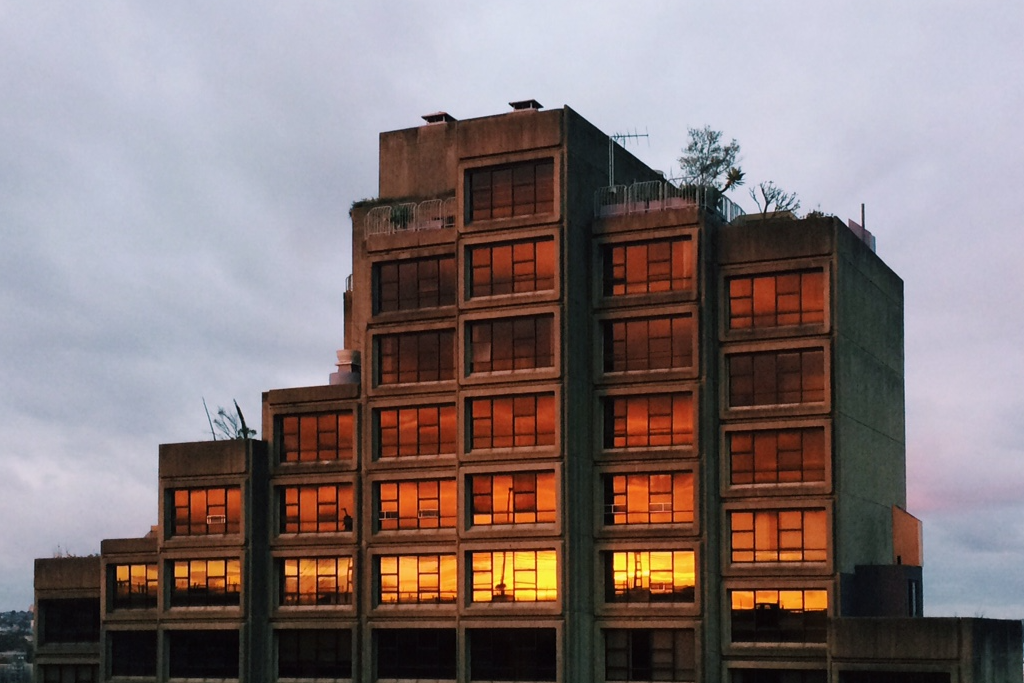Campaigners Vow To Put Their Bodies On The Line To Save Iconic Sirius Building
The building has a strong working class history. The government wants to tear it down for apartments.

Yesterday, NSW Minister for Heritage Gabrielle Upton announced that the state government will not be heritage listing Sydney’s iconic Sirius building.
The decision paves the way for the building to be demolished in the near future. The government intends to sell the building, which has been used as social housing for years, and developers have signalled their interest in capitalising on the site’s harbour views by replacing it with a larger, more modern apartment complex.
Having déjà vu? That’s because it’s not the first time the government has decided not to list this building, which supporters say is both an iconic example of Brutalist architectural style as well as an important part of Sydney’s working class activist history.
Last time, a successful crowdfunded legal challenge saw a judge describe the government’s decision as “nonsense”, overrule it, and require that the minister go through the process again. A reasonable person might pause, reflect, and take that golden opportunity to change the decision, but the NSW government is not a reasonable person.
The new decision goes against the unanimous recommendation of the NSW Heritage Council, and comes less than a week after the building was placed on the World Monuments Fund watch list. Minister Upton was careful to consider the building’s potential heritage value to avoid the same legal challenge as last time, but ultimately concluded that “while the Sirius Building is distinctive, in my view, it is not a landmark worthy of State heritage protection”.
Shaun Carter, architect and chairperson of the Save Our Sirius Campaign, said he thought it was “absolute bullshit” for a minister with a background in finance and law to make a decision contradicting the advice of experts.
Our @SaveOurSirius #PressRelease
A RECKLESS & OUT OF TOUCH GOVERNMENT
"@saveoursirius will continue the fight…We will not give in"#nswpol pic.twitter.com/zvSvysy88Q— Shaun Carter (@ShaunCarter70) October 25, 2017
“It’s unsurprising that they’ve made this decision, but I’d also say very disappointing,” he told Junkee. “The government don’t learn along the way, they’re just riding roughshod over the people.”
Carter said the Save Our Sirius campaign has referred the new decision to the Environmental Defenders Office to investigate the possibility of a second legal challenge. Failing that, he said the building’s supporters are prepared to put their bodies on the line.
“We’ll continue to fight,” he said, “and if that has to come down to us barricading the front and standing between the building and the wrecking ball, that’s what we’re going to do. Let them force us out of the way.”
“These government people don’t own Sydney — they’re appointed by us to be the administrators of it. And if enough people say enough is enough, we’ll kick them out.”
Under the Libs heritage means nothing. It is all about the $. A shameful decision. #nswpol https://t.co/0SEmBGK7n4
— Penny Sharpe (@PennySharpemlc) October 25, 2017
Despite expert opinion to grant heritage listing to Sirius – @gabrielleupton finds “contrary expert opinions” – who? https://t.co/CmRFGc3T6s
— Andrew Nimmo (@NSWChapterPres) October 25, 2017
Sirius, which sits next to the Harbour Bridge, was actually constructed as a response to similar activism known as the Green Bans, which protested the demolition of working class housing in inner-Sydney and the eviction of the community in the 1970s. In addition to campaigning to preserve the building’s heritage value, the Save Our Sirius campaign has been a fierce advocate for Sirius’s crucial role providing inner-city public housing.
The NSW Heritage Council recommended Sirius be heritage listed on two counts (aesthetic value and rarity), despite only one reason being sufficient for heritage listing. The heritage value of Sirius is also supported by the World Monuments Fund, the NSW chapter of the Australian Institute of Architects, the Tenants Union of NSW, the City of Sydney Council, the Historic Houses Association, and the National Trust, among others.
You can follow the campaign to save Sirius here.

